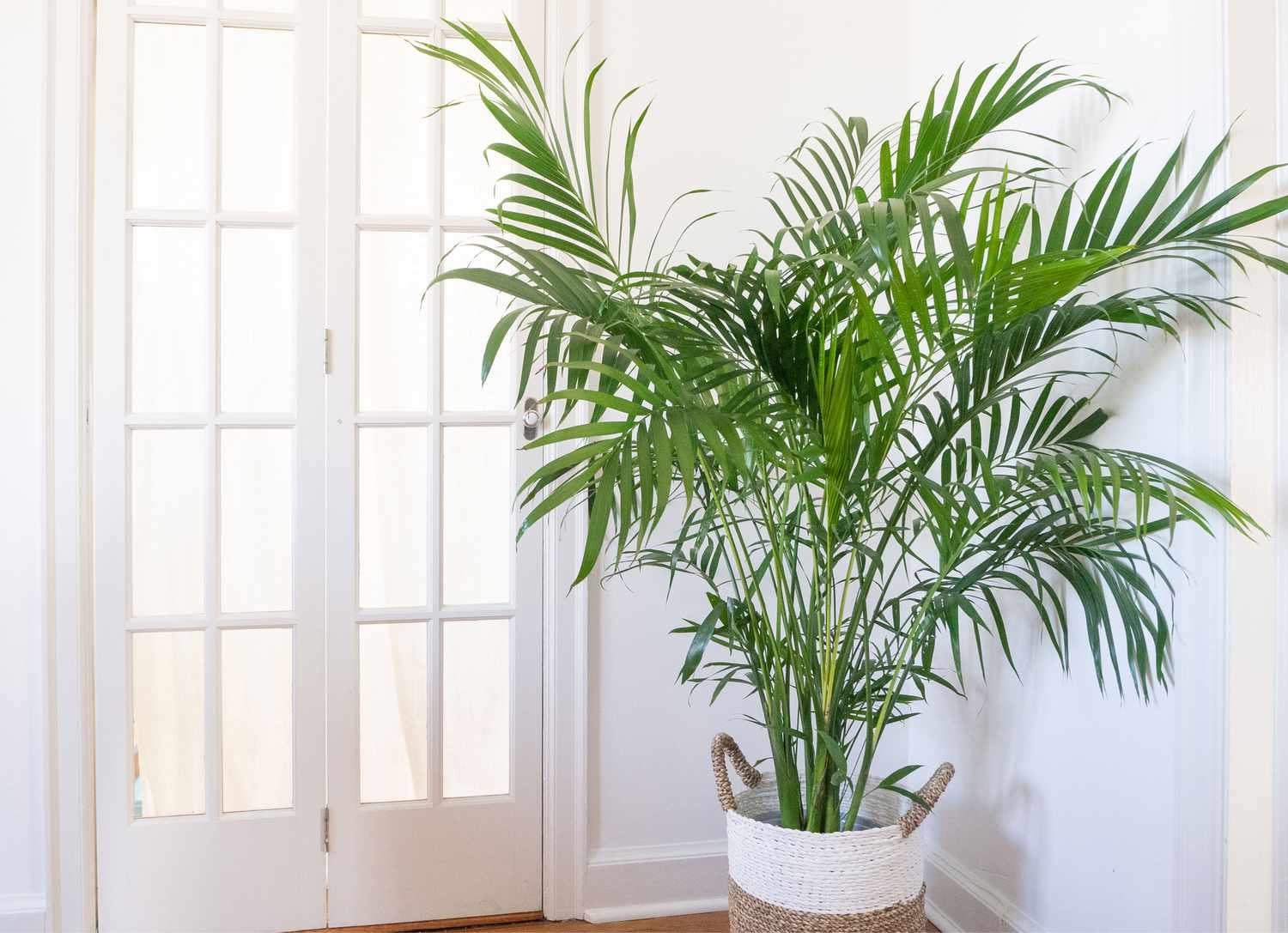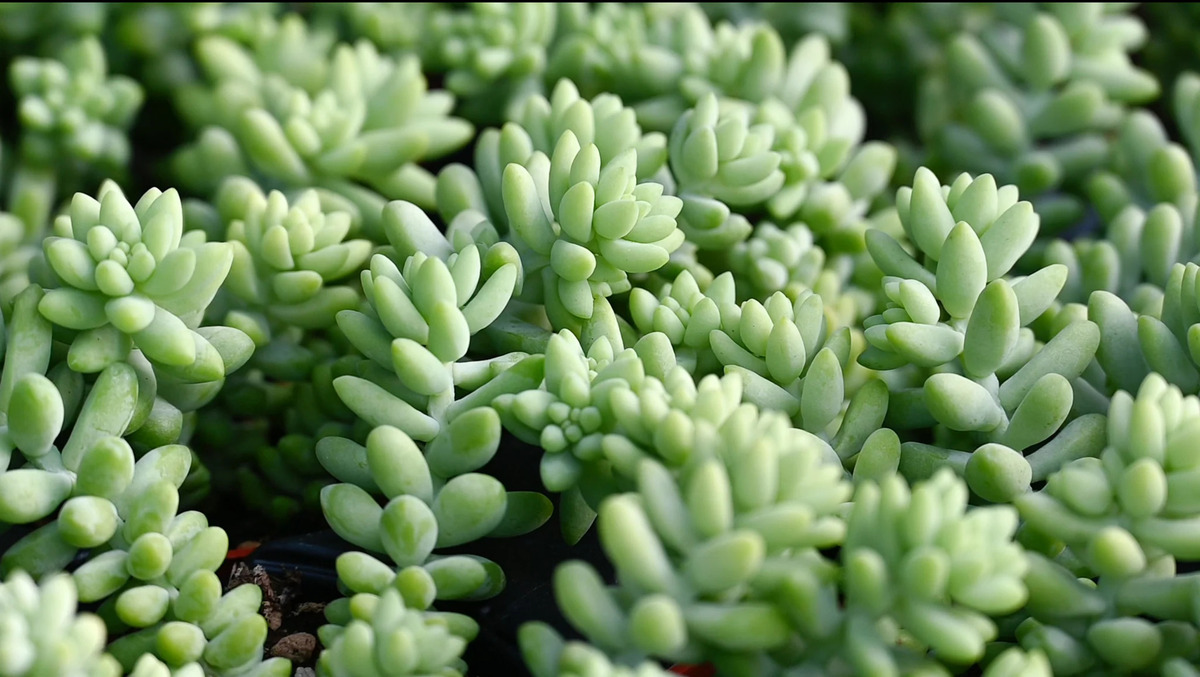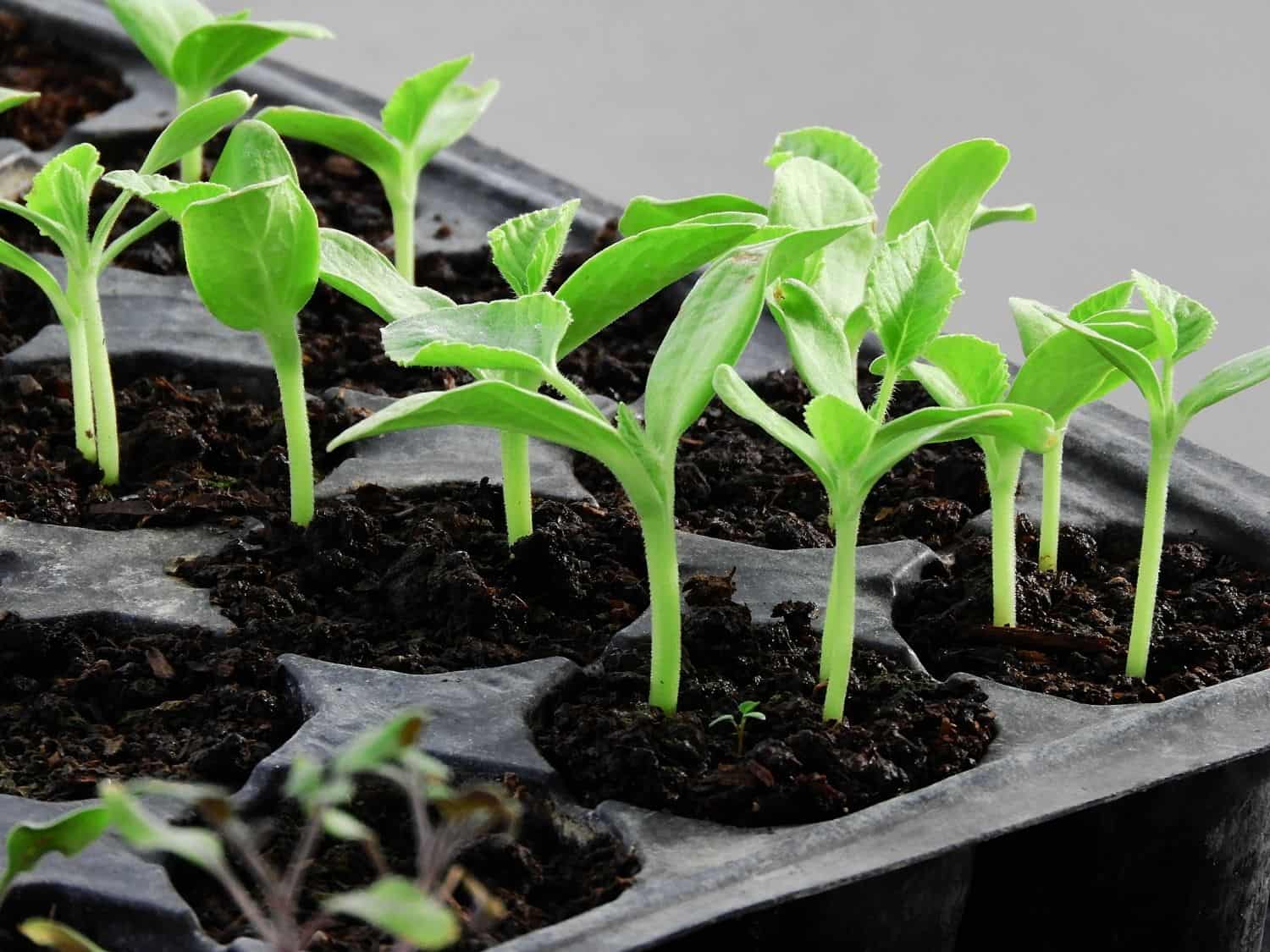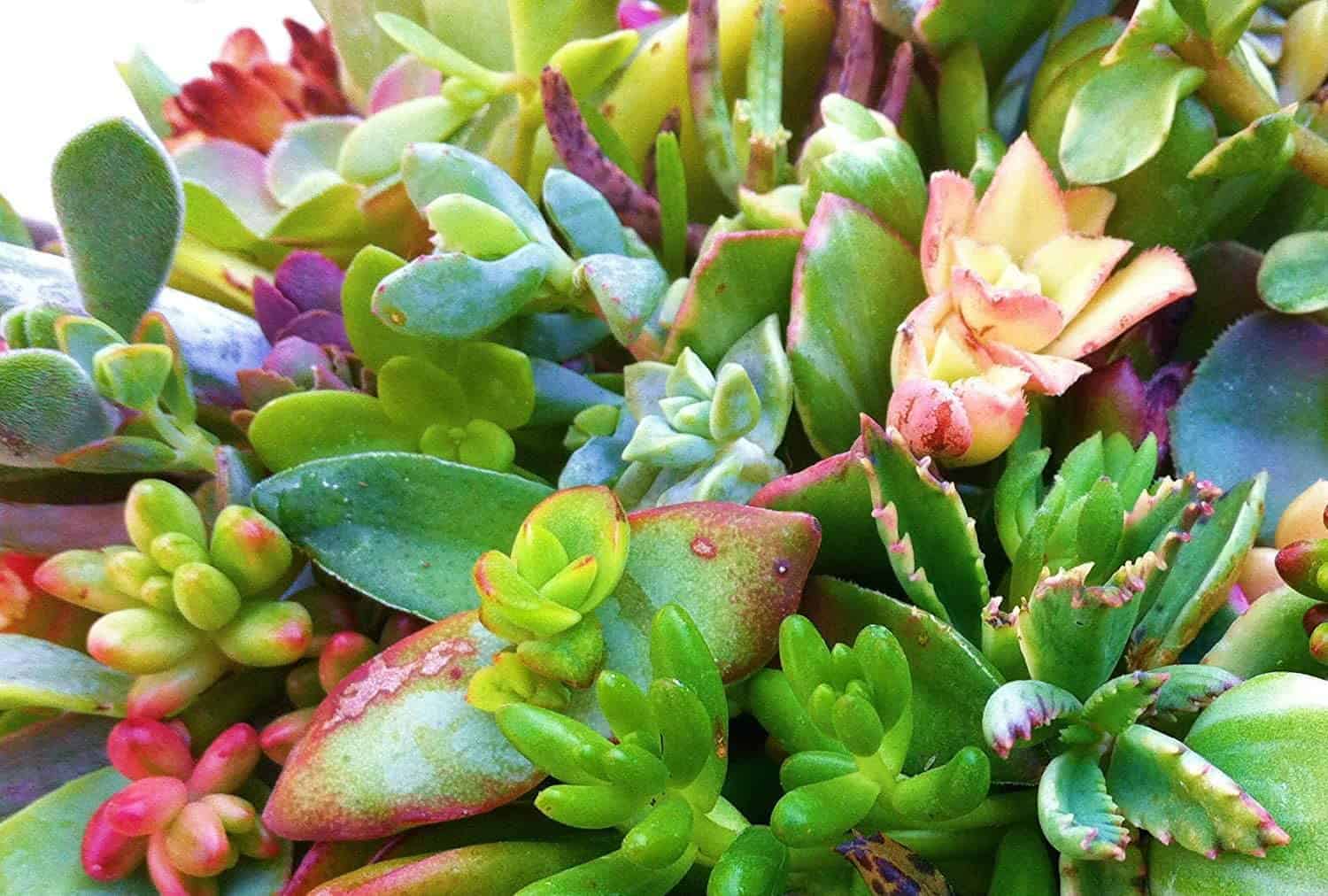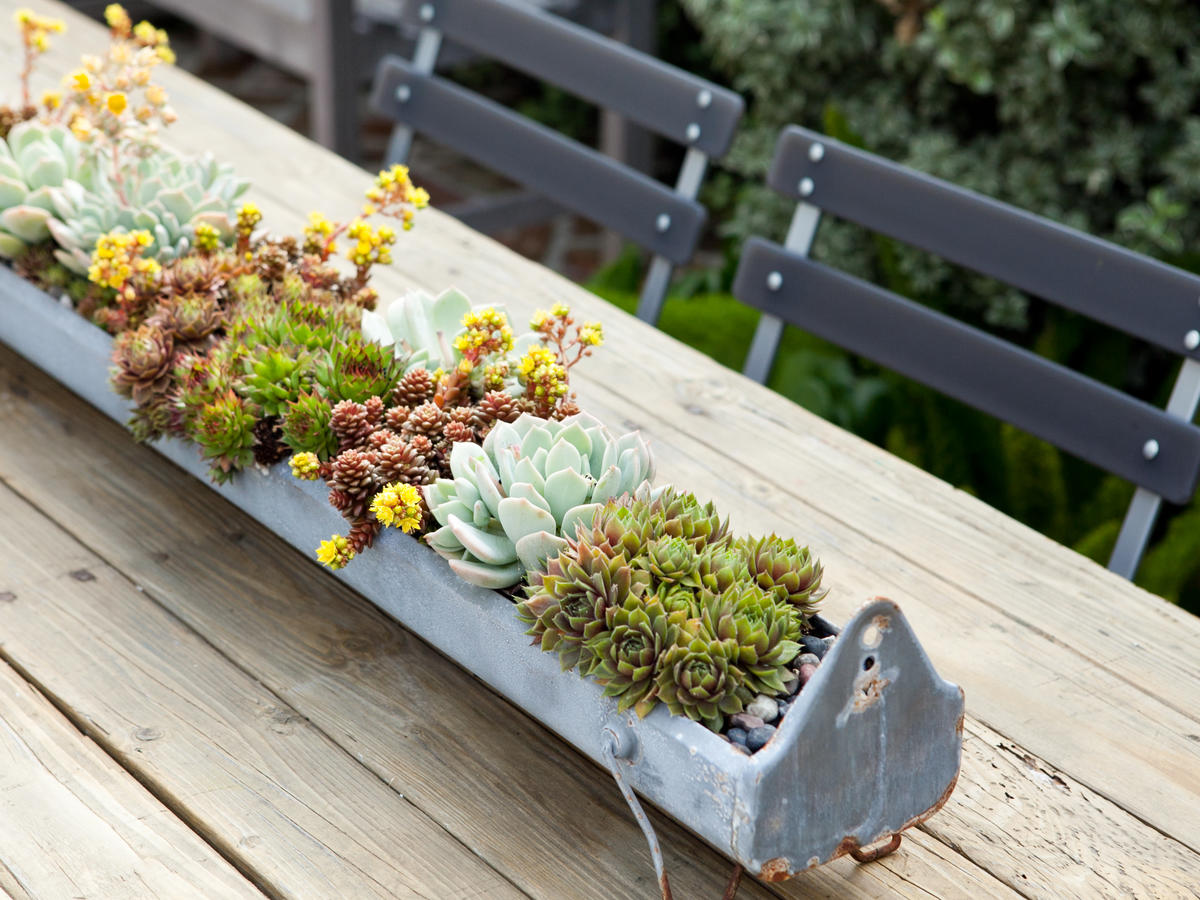Home>Gardening Techniques>Plant Care>How To Care For Sunflowers In A Vase
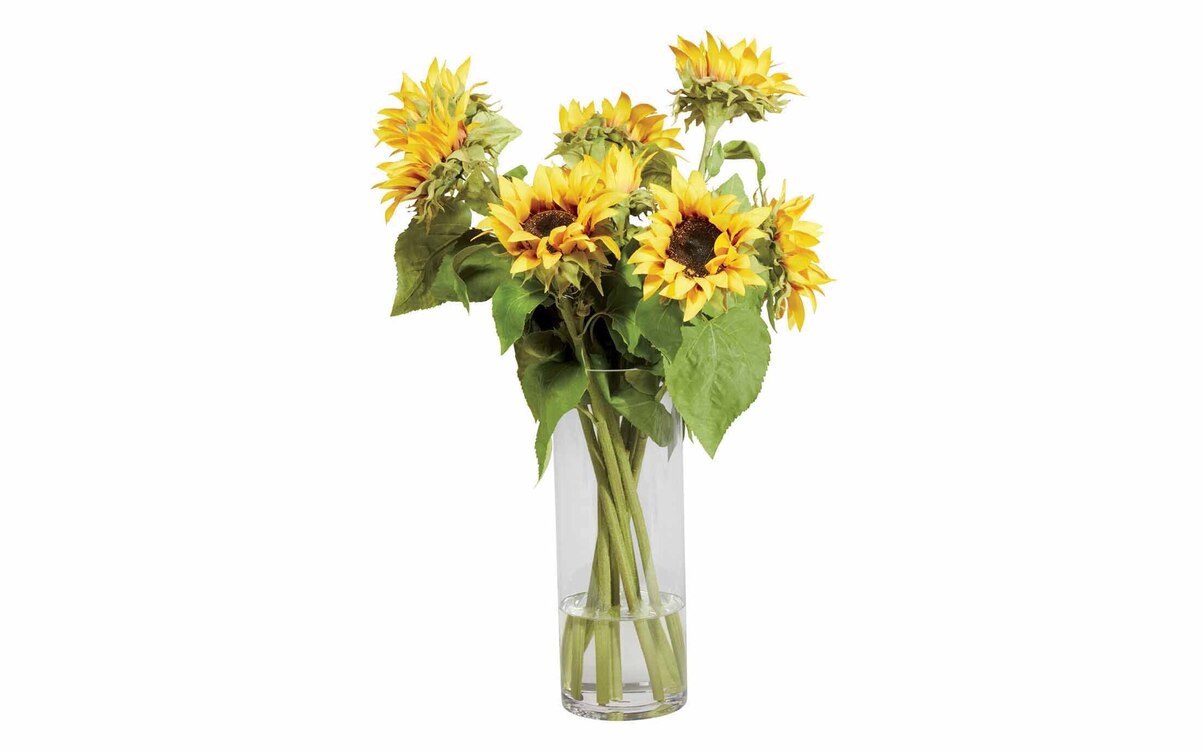

Plant Care
How To Care For Sunflowers In A Vase
Modified: January 22, 2024
Learn essential plant care tips for sunflowers in a vase to keep them vibrant and fresh for longer. Discover proper watering, light, and temperature requirements to ensure your sunflowers thrive.
(Many of the links in this article redirect to a specific reviewed product. Your purchase of these products through affiliate links helps to generate commission for Chicagolandgardening.com, at no extra cost. Learn more)
Table of Contents
Introduction
Sunflowers are vibrant and beautiful flowers that can brighten up any space with their golden yellow petals and tall, slender stems. Whether you receive a bouquet of sunflowers or grow them in your garden, taking proper care of these stunning flowers in a vase is crucial to ensure their longevity and beauty.
There’s something special about sunflowers. They symbolize happiness, positivity, and warmth, making them a popular choice for bouquets and floral arrangements for various occasions, from birthdays and anniversaries to weddings and celebrations of life.
When caring for sunflowers in a vase, it’s important to understand their unique needs. Unlike other cut flowers, sunflowers have thick stems that require special attention. By following a few simple guidelines, you can extend the life of your sunflowers and keep them looking gorgeous for longer.
In this article, we’ll explore the essential steps to care for sunflowers in a vase. Whether you’re a seasoned flower enthusiast or a novice with a newfound love for sunflowers, these tips will help you keep your sunflowers fresh and vibrant for as long as possible.
Let’s dive in and discover how to ensure the beauty and longevity of your sunflowers in a vase.
Choosing the Right Sunflowers
When selecting sunflowers for your vase, there are a few factors to consider to ensure that you pick the freshest and most beautiful blooms.
1. Size: Sunflowers come in various sizes, from small and delicate to large and statement-making. Consider the size of your vase and the desired visual impact when choosing sunflowers.
2. Color: While yellow is the most common color associated with sunflowers, they can also be found in shades of orange, red, and even bi-color varieties. Pick the color that resonates with your personal style or blends well with the overall aesthetic of your space.
3. Stem Length: Opt for sunflowers with long, sturdy stems. This will not only make them easier to arrange in a vase but will also ensure that they have enough support to stand upright for an extended period.
4. Petal Condition: Examine the petals of the sunflowers to ensure they are intact and free from blemishes or discoloration. Avoid sunflowers with droopy or wilting petals, as they may not last as long in a vase.
5. Freshness: Look for sunflowers with firm and crisp stems. Check if the leaves are vibrant and green, indicating that they are freshly cut. Avoid sunflowers that show signs of decay or mold.
By carefully selecting the right sunflowers, you can ensure that your vase arrangement will be visually stunning and will have a longer lifespan.
Now that you know how to choose the perfect sunflowers, let’s move on to the next step in caring for them: preparing the vase.
Preparing the Vase
Properly preparing the vase is an essential step in ensuring the longevity and freshness of your sunflowers. Follow these steps to create an optimal environment for your blooms:
1. Cleanliness: Start by thoroughly cleaning the vase with warm water and mild soap. Rinse it well to remove any residue that could potentially harm the flowers.
2. Size and Shape: Choose a vase that suits the size and height of your sunflowers. The vase should provide enough space for the stems to spread out comfortably without overcrowding.
3. Water Quality: Fill the vase with clean, room temperature water. Avoid using overly cold or hot water, as extreme temperatures can shock the flowers and shorten their lifespan.
4. Flower Food: Consider adding a packet of flower food to the water. Flower food contains essential nutrients and biocides that can help extend the life of your sunflowers.
5. Leaf Removal: Before placing the sunflowers in the vase, remove any leaves that would be submerged in the water. This helps prevent bacterial growth and keeps the water fresh for longer.
6. Placement: Find a suitable location for your vase, away from direct sunlight and drafts. Sunflowers thrive in moderate temperatures, so choose a spot with a consistent room temperature to keep them happy.
By taking the time to properly prepare the vase, you create an environment that promotes the health and longevity of your sunflowers. Now that the vase is ready, it’s time to move on to the next step: trimming the stems.
Trimming the Stems
Trimming the stems of your sunflowers is an important step in maximizing their water uptake and maintaining their freshness. Follow these guidelines to ensure proper stem trimming:
1. Use sharp, clean shears: Before trimming the stems, make sure your shears are clean and sharp. This helps create a clean cut, allowing the sunflowers to absorb water more easily.
2. Cut at an angle: Trim the stems at a 45-degree angle. This increases the surface area for water absorption and prevents the ends from sitting flat at the bottom of the vase, which can restrict water intake.
3. Remove any excess foliage: Strip off any leaves that would be submerged in the water. Leaves left in the water can promote bacterial growth and decrease the lifespan of your sunflowers.
4. Measure and adjust stem length: Take into consideration the height of your vase and the desired arrangement when trimming the stems. Start by cutting the stems slightly longer than the desired length and gradually adjust as needed.
5. Avoid over-trimming: While it’s important to trim the stems, be cautious not to remove too much length. Sunflowers need a sufficient stem length for support and water absorption.
6. Immediately place in water: After trimming, place the sunflowers into the prepared vase with water. Avoid leaving the stems exposed to air for an extended period as this can impede water uptake.
By following these steps and trimming the sunflower stems correctly, you are ensuring that the flowers are able to absorb water efficiently, keeping them fresh and vibrant for a longer duration.
Now that you have trimmed the stems, let’s move on to the next step: watering and hydration.
Watering and Hydration
Providing proper hydration is crucial for maintaining the freshness and vitality of your sunflowers. Here are some essential tips for watering and ensuring optimal hydration:
1. Monitor water level: Check the water level in the vase daily and replenish it as needed. Sunflowers have thirsty stems and can consume a substantial amount of water, especially in warm weather.
2. Add flower food: If your sunflowers came with a packet of flower food, follow the instructions and add it to the water. Flower food contains essential nutrients that can help prolong the life of your flowers.
3. Pour gently: When adding water to the vase, pour it gently to avoid agitating the flowers and causing damage. Aim the water towards the base of the stems, ensuring it doesn’t splash onto the petals.
4. Avoid overwatering: While it’s important to keep the water level sufficient, avoid overwatering as it can lead to rotting and fungal growth. Ensure that the water level remains below the leaves and petals of the sunflowers.
5. Mist the petals: Sunflowers appreciate a mild misting on their petals, as it helps maintain their hydration and freshness. Use a spray bottle to lightly mist the petals without soaking them.
6. Hydration in hot weather: If you’re displaying sunflowers in a warm environment, consider placing the vase on a tray filled with water or using water-filled floral tubes. This can provide additional hydration to the flowers.
By following these watering and hydration tips, you can ensure that your sunflowers receive the moisture they need to stay vibrant and beautiful for a longer period.
Next, we’ll cover the importance of changing the water regularly to promote the longevity of your sunflowers.
Changing the Water
Regularly changing the water in the vase is a crucial aspect of caring for sunflowers and maintaining their freshness. Here’s why changing the water is important and how to do it effectively:
1. Prevent bacterial growth: As time passes, the water in the vase can become stagnant and develop bacteria that are harmful to the sunflowers. Changing the water regularly helps prevent the growth of bacteria and keeps the flowers healthy.
2. Refresh nutrients: Over time, the water may lose the nutrients provided by flower food or become depleted of natural nutrients that help the sunflowers thrive. Changing the water allows you to replenish these essential nutrients, promoting the longevity of your blooms.
3. Reduce foul odors: Old and stagnant water can emit unpleasant odors, detracting from the beauty of the sunflowers. Changing the water frequently helps keep the environment fresh and pleasant.
4. Increased water uptake: By changing the water, you provide fresh hydration to the sunflowers, increasing their ability to absorb water efficiently and maintain their vibrant appearance.
5. Consider frequency: Aim to change the water every two to three days for optimal results. However, if you notice the water becoming cloudy or foul-smelling before that time, change it immediately.
6. Cleaning the vase: When changing the water, take the opportunity to clean the vase thoroughly. This removes any residue or bacteria buildup that may have accumulated on the inner surface, promoting a healthier environment for the sunflowers.
To change the water, carefully pour out the old water from the vase. Rinse the vase with warm, soapy water, and then rinse it thoroughly to remove any soap residue. Refill the vase with clean, room temperature water, and place the sunflowers back into the fresh water.
By regularly changing the water in the vase, you ensure the continued vitality and beauty of your sunflowers. Next, we’ll discuss the importance of keeping sunflowers away from direct sunlight.
Avoiding Direct Sunlight
While sunflowers are known to thrive under the sun, it’s important to keep them away from direct sunlight when displayed in a vase. Here’s why avoiding direct sunlight is essential for the health and longevity of your sunflowers:
1. Sunflower orientation: Sunflowers naturally follow the direction of the sun, a phenomenon known as heliotropism. When exposed to direct sunlight for prolonged periods, sunflowers can become overly stressed, resulting in wilting and reduced vase life.
2. Heat stress: Direct sunlight can subject sunflowers to excessive heat, causing the water in the vase to evaporate rapidly. This can lead to dehydration and premature wilting of the flowers.
3. Petal fading: Sunflowers have vibrant, pigmented petals that can fade when exposed to intense sunlight. By keeping them away from direct sunlight, you can help preserve the bright and cheerful colors of the petals for a longer duration.
4. Stem strength: Excessive exposure to direct sunlight can weaken the stems of sunflowers. Keeping them in a shaded area helps maintain their structural integrity and supports their upright position in the vase.
5. Temperature control: Direct sunlight can increase the temperature around the sunflowers, potentially causing the water to become warmer than desired. Sunflowers prefer moderately cool environments, and excessive heat can accelerate their wilting process.
6. Ideal placement: Find a well-lit area in your home or office that offers indirect or diffused sunlight for your sunflowers. This provides adequate light for their growth and appearance while protecting them from the damaging effects of direct sunlight.
By keeping your sunflowers away from direct sunlight, you can ensure their health, extend their vase life, and preserve their vibrant colors. The next section will cover tips for maintaining the proper temperature for your sunflowers.
Maintaining the Temperature
Maintaining the proper temperature is crucial for ensuring the longevity and health of your sunflowers. Here are some tips to help you create an ideal environment for your floral arrangement:
1. Moderate room temperature: Sunflowers prefer moderate temperatures between 65 to 75 degrees Fahrenheit (18 to 24 degrees Celsius). Avoid exposing them to extreme temperatures, such as drafts, heating vents, or direct airflow from fans, as this can cause wilting or dehydration.
2. Avoid temperature fluctuations: Sudden changes in temperature can stress sunflowers and affect their vase life. Keep them away from areas with rapid temperature changes, such as near doors or windows, to maintain a consistent and stable environment.
3. Cooler nighttime temperatures: Sunflowers appreciate slightly cooler temperatures during the night. If possible, move the vase to a slightly cooler area of your home overnight to provide a more favorable environment for the flowers.
4. Refrigeration: If you want to extend the vase life of sunflowers, you can place them in the refrigerator for a few hours during the night. Ensure that the refrigerator temperature is set between 34 to 40 degrees Fahrenheit (1 to 4 degrees Celsius) and that the sunflowers are not exposed to fruits or vegetables, as these produce ethylene gas, which can shorten their lifespan.
5. Protective covers: If you’re transporting or storing the sunflowers, use protective covers such as a paper bag or plastic wrap to shield them from extreme temperatures or temperature fluctuations.
6. Regular temperature checks: Monitor the temperature of the room where your sunflowers are displayed and make adjustments as needed. Maintaining the proper temperature will help prolong the life and vibrancy of your sunflowers.
By maintaining a suitable temperature for your sunflowers, you create a comfortable and favorable environment that allows them to thrive and stay beautiful for an extended period.
Next, we’ll explore some tips for preventing wilting and keeping your sunflowers fresh and perky in a vase.
Preventing Wilting
Preventing wilting is a top priority when caring for sunflowers in a vase. By following these tips, you can help maintain their freshness and ensure they stay perky and beautiful:
1. Hydrate immediately: Upon receiving or cutting your sunflowers, place them in water as soon as possible. This prevents them from dehydrating and wilting before they have a chance to absorb water properly.
2. Proper water levels: Check the water level in the vase daily and ensure it remains at an adequate level. Sunflowers have thirsty stems and require sufficient water to stay hydrated and upright.
3. Re-cut stems: If you notice your sunflowers starting to wilt, promptly re-cut the stems at a 45-degree angle and place them in fresh water. This can rejuvenate the flowers and allow for better water uptake.
4. Remove wilted flowers: As soon as a sunflower shows signs of wilting, remove it from the vase. Wilting flowers produce ethylene gas, which can accelerate the wilting process in other blooms.
5. Mist the petals: Occasionally misting the petals of your sunflowers with clean water can help keep them hydrated and prevent wilting. Be sure to mist lightly to avoid oversaturating the flowers.
6. Avoid extreme temperatures: As mentioned earlier, extreme temperatures, both hot and cold, can stress sunflowers and cause them to wilt. Keep them in a moderate temperature environment away from drafts, direct sunlight, and sources of heat.
7. Display away from ripening fruits: Sunflowers are sensitive to ethylene gas, which is produced by ripening fruits. Keep them away from fruit bowls or areas with ripening fruits to prevent premature wilting.
By implementing these strategies, you can successfully prevent wilting and keep your sunflowers fresh and vibrant for a longer period, allowing you to enjoy their beauty throughout their vase life.
In the next section, we’ll explore tips for displaying and arranging sunflowers to showcase their beauty to the fullest.
Displaying and Arranging Sunflowers
Displaying and arranging sunflowers in an aesthetically pleasing way can enhance the beauty of these vibrant blooms. Here are some tips to help you showcase your sunflowers to their fullest:
1. Choose a suitable vase: Opt for a vase that complements the size and style of your sunflowers. Consider a clear glass vase to highlight the stem structure or a colorful ceramic vase to add a pop of contrast.
2. Single-stem focus: For a simple and elegant look, display a single large sunflower in a tall vase. This allows the beauty of the individual flower to take center stage.
3. Mix and match: Combine sunflowers with other flowers, foliage, or decorative elements to create stunning floral arrangements. Consider flowers like daisies, roses, or baby’s breath, or add textured foliage like eucalyptus or ferns for a lush and dynamic display.
4. Height and angles: Vary the heights and angles of the sunflowers to add dimension to your arrangement. Trim the stems to different lengths and position the flowers at different angles for a more visually appealing composition.
5. Grouping: Create impact by grouping several sunflowers together. A cluster of sunflowers in a tight arrangement can create a vibrant focal point and provide a fuller presence.
6. Consider the surroundings: Take into account the space where you plan to display your sunflowers. Consider the colors of the room and the overall decor style to ensure that your arrangement complements the surroundings.
7. Refresh the arrangement: As the sunflowers age, remove any wilted flowers and adjust the arrangement as needed to maintain its visual appeal. Refresh the water and trim the stems regularly to prolong the lifespan of your sunflowers.
With these tips in mind, you can create beautiful and striking displays with your sunflowers. Let your creativity flourish and experiment with different arrangements to find the style that best suits your taste and the space you’re decorating.
Now that you have learned various aspects of caring for sunflowers and arranging them, you’re well-equipped to showcase the beauty of these magnificent flowers.
Conclusion
Caring for sunflowers in a vase requires attention to detail and a commitment to providing the ideal conditions for their longevity and beauty. By following the steps outlined in this article, you can ensure that your sunflowers stay fresh, vibrant, and perky for an extended period.
From choosing the right sunflowers and preparing the vase to trimming the stems and providing adequate hydration, each step plays a crucial role in maintaining the health and beauty of these magnificent flowers. Remember to avoid direct sunlight, maintain the appropriate temperature, and prevent wilting by implementing proper care techniques.
Additionally, don’t forget the importance of changing the water regularly, arranging the sunflowers in an appealing manner, and keeping them away from ripening fruits. These little details can make a significant difference in the lifespan and visual impact of your sunflowers.
With their sunny disposition and captivating presence, sunflowers bring warmth, happiness, and a touch of natural beauty to any space. By mastering the art of caring for sunflowers in a vase, you can enjoy their beauty for longer, whether you receive them as a gift or grow them in your own garden.
So, next time you have the pleasure of having sunflowers grace your table or brighten up your living space, follow these tips and guidelines to ensure that these sunny blooms enchant you and those around you for as long as possible.
Happy sunflower care and enjoy the beauty they bring!
